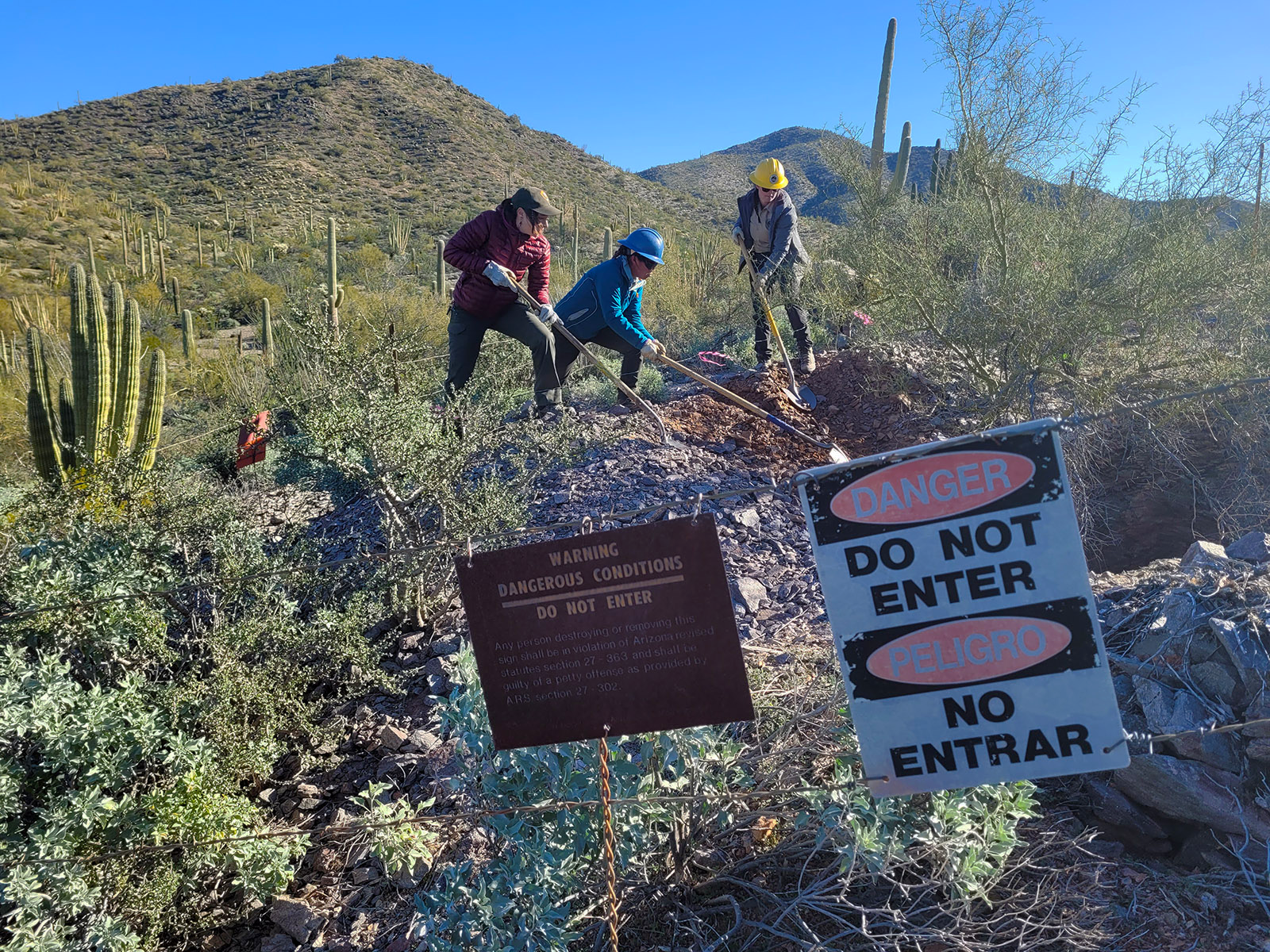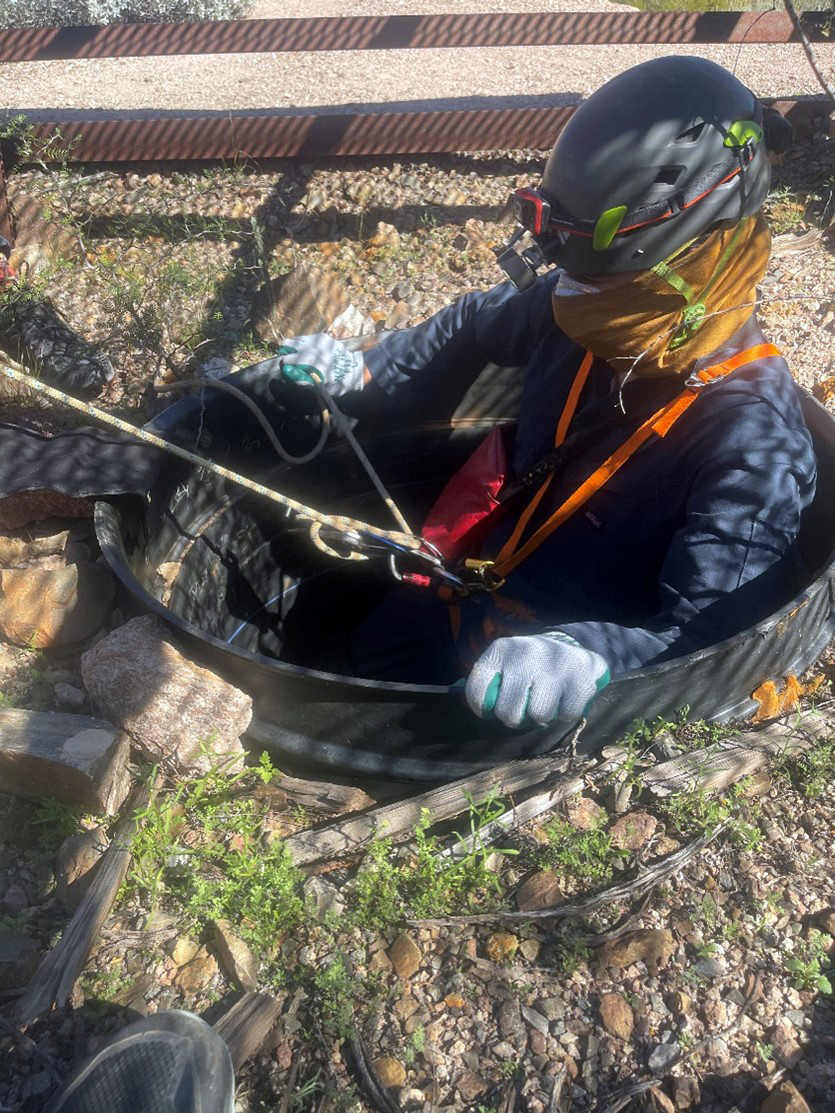Last updated: January 3, 2024
Article
Youth Crews Close Mines at Organ Pipe National Monument

NPS Photo
At Organ Pipe National Monument, 25 abandoned mines were closed using funds from the Bipartisan Infrastructure Law. Park geographer Ami Pate led a project that included youth crews and a partnership with Bat Conservation International to reclaim mining sites and protect bat habitat. Reclaiming abandoned mines and making them safe for people and wildlife came with the added opportunity to create new park stewards through youth engagement.
Organ Pipe Cactus isn’t alone in this challenge to address abandoned mine lands. National parks across the country – like Joshua Tree National Park and Kenai Fjords National Park – are using Bipartisan Infrastructure Law funding to close mines and remove safety hazards that have languished in parks for decades or more. Pate and her team worked with staff at fellow Arizonan unit, Saguaro National Park, for guidance on restoring the mines. Equipped with guidance from Saguaro National Park staff, Pate led a team of youth from the Arizona Conservation Corps to close the abandoned mines. The work took place over the winter and spring of 2023. The youth teams learned about the park’s designated wilderness and mining history and used geospatial technology to map mine closures.

NPS Photo
According to Pate, three different crews worked at Organ Pipe Cactus. “Without disturbing the wilderness area around the mines, we backfilled the mines with the waste rock that had been taken out of them using mostly hand tools,” she said. “And, because we were collecting geospatial data at the sites, we estimated that they removed about 106 fence posts and about 8,900 feet of barbed wire from the wilderness backcountry.”
These abandoned mines may be reclaimed or restored, depending on the needs at the individual sites. In some cases, restoration of the vegetation or water features around the sites is required. For others, such as the mines filled by the youth crews, the manual labor to refill the mines may be all that is needed. The mines at Organ Pipe Cactus were six to 10 feet deep, and while there isn’t much of the mine to behold now the crews left rock cairns and other historic mine markers in place.
“We didn’t want to erase these features completely off the landscape because it is part of the history of the park and its mining era,” she said.
For Pate, this opportunity to share the park she has worked in for many years with the crews has been the most rewarding part of the project that the Law funding made available.
“I most enjoyed working with the Arizona youth crews,” she said. “The work was challenging, but you could see the satisfaction they got out of reclaiming wilderness areas and learning about the area's mining history. They were great kids to work with.”

Photo Courtesy of Bat Conservation International
For another 22 mines at Organ Pipe Cactus National Monument, Bat Conservation International (BCI) swooped into survey features such as mine openings and abandoned structures for use by bats and other wildlife. Through the survey, BCI observed Townsend’s big-eared bat and California leaf-nosed bat, as well as evidence of the federally vulnerable lesser long-nosed bat.
“We gathered a lot of good information about winter hibernation and summer seasonal sites for bats. For instance, the lesser long-nosed bat comes to the park in the summer to feed on the cactus fruit,” Pate said.
The mines were assessed for their suitability as “bat-friendly” and then closure recommendations for each mine were based on those findings. Several of the mine sites were found to be moderate-to-good suitability, while at least two were found to be excellent bat habitat, where large roosts of bats can call home. Those mines will be protected, and the NPS will install bat-friendly closures to deter accidental disturbance by visitors as part of future restoration projects.
Organ Pipe Cactus National Monument’s desert ecosystem harbors unique flora, fauna, and interesting mining history. Likewise, the ecosystem restoration projects made possible by the Bipartisan Infrastructure Law allowed Pate and her colleagues to create unexpected educational and environmental opportunities from the park’s abandoned mine land, hopefully, stewarding the next generation of national park enthusiasts as well as wildlife.
